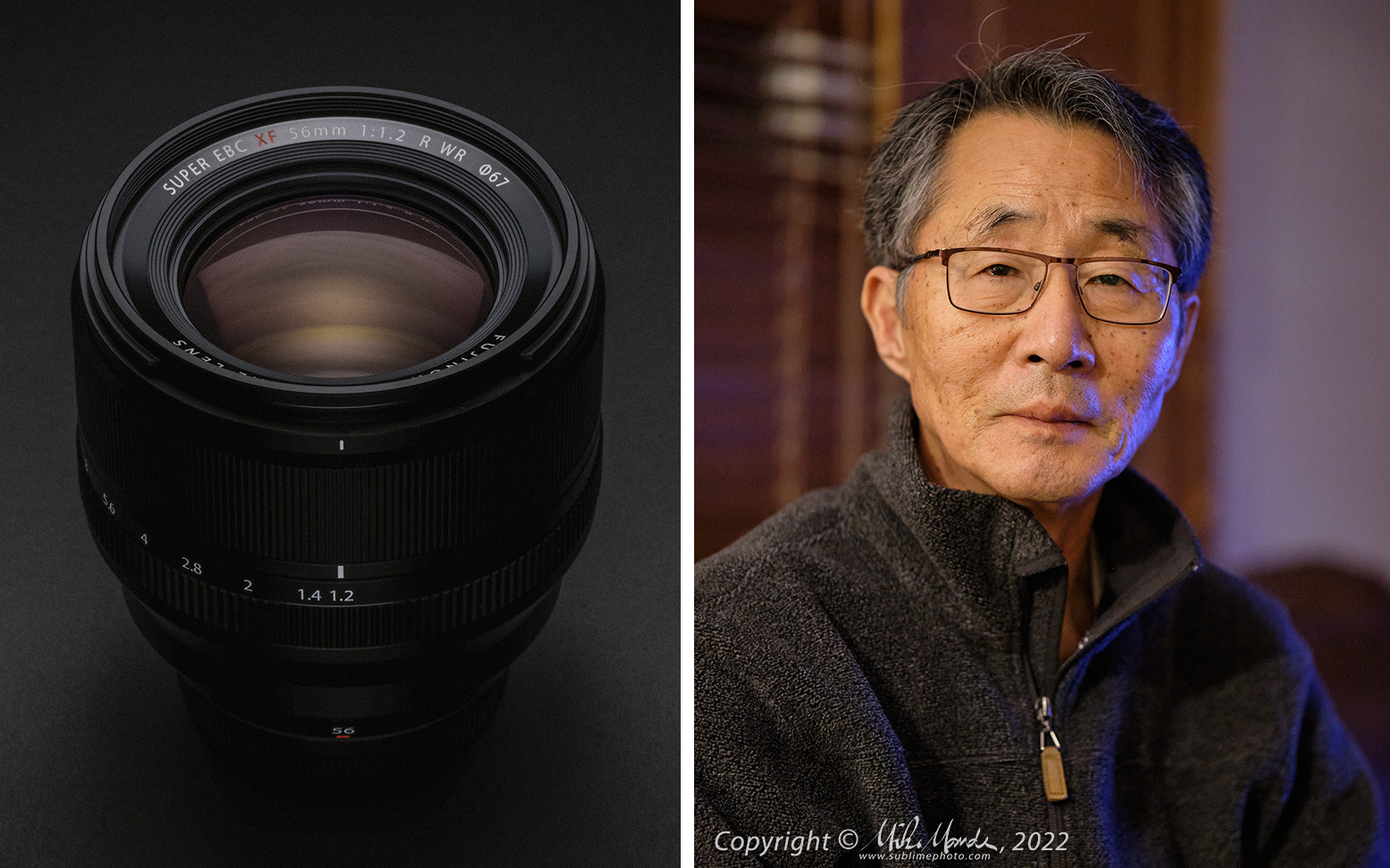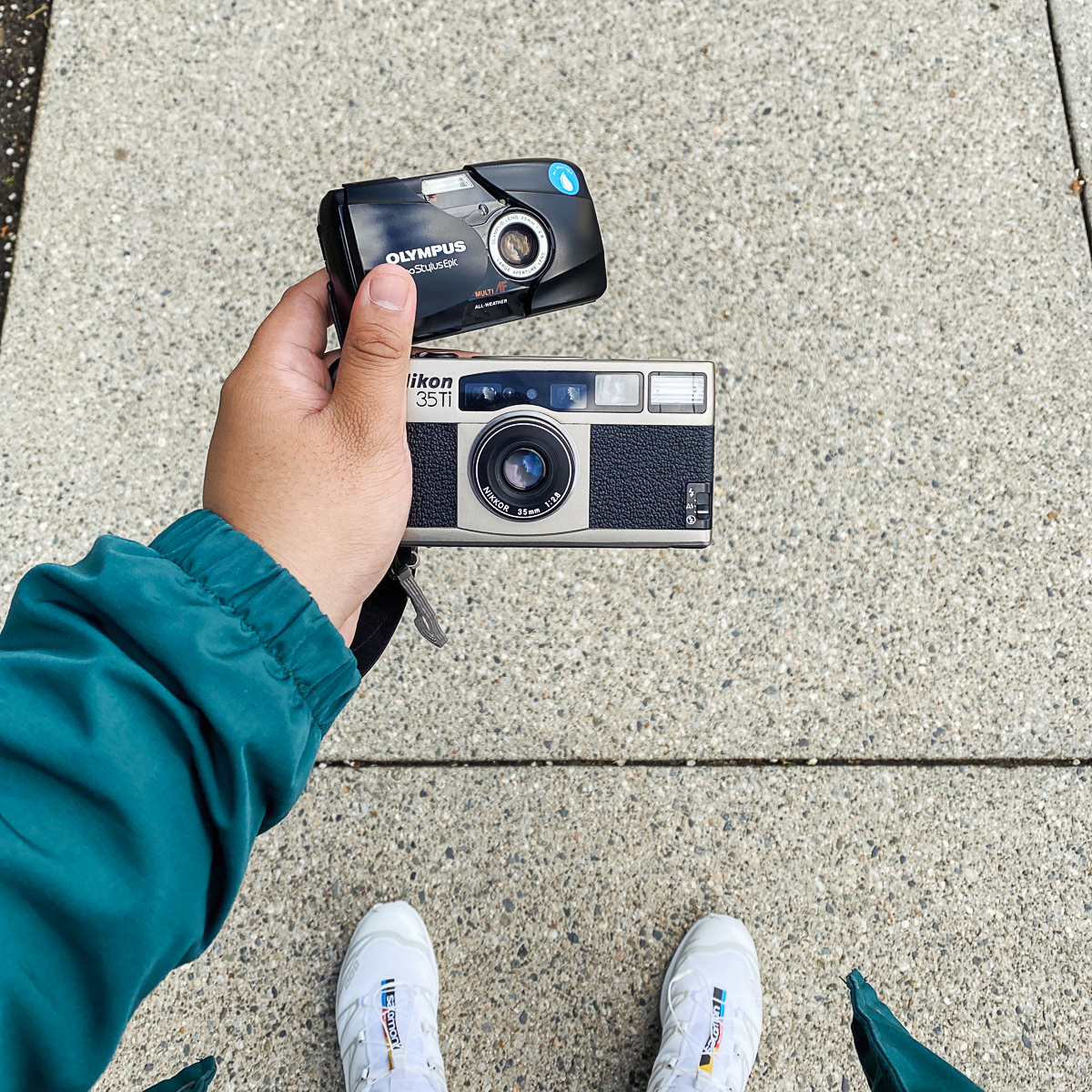>>> Head straight to the sample gallery (32 images): Fujinon XF 56mm f/1.2 R WR Sample Images
[Update 9/22/2023]: Added some more 56mm samples to the gallery from my trip to Hawaii in August.
In late 2022, I decided to revise my own personal Fujinon XF prime lens lineup. What I did, was replace my Fujinon XF 50mm f/2 R WR and XF 90mm f/2 R LM WR with a brand new XF 56mm f/1.2 R WR, the revised version of the original 56mm f/1.2. As much as I loved the 50mm and 90mm primes, I just didn’t find myself using the 90mm very often. I tend to gravitate towards wide-angle to short telephoto focal lengths and as good as the 90mm was for, as an example, tight portrait shots, that focal length is something I needed rarely. In addition, while the little 50mm f/2 is truly a very good lens, there is no denying that the new 56mm f/1.2 is better in pretty much every way you can imagine, except size/weight and price of course, and perhaps focusing speed. I loved shooting the 90mm wide open for portraits, and until the new 56mm came out, I actually preferred the 90mm lens’ rendering to all other portrait oriented XF prime lenses. The 90mm was tack sharp wide open with virtually no purple fringing and had lovely, smooth background blur, but apart from being a shorter focal length, the new 56mm renders just as beautifully. For a big comparison of all the previous “portrait primes”, see the test I did when the XF 50mm f/1.0 came out: Tested! Fujinon XF 50mm f/1.0 R WR
I didn’t mind losing the 50mm focal length in my lens switch, since the increase to 56mm is minimal, so pretty much anything I shot with the 50mm, could also be shot with the 56mm. Lastly, I now needed one less lens compartment in my camera bag and that simplified and lightened my overall kit. The new 56mm is a superb lens to use for general portraits as well, so I am not really missing the 90mm, except maybe for those occasional tight headshots that I could do with the 90mm while being further away from the subject.
What is so different about the latest XF 56mm f/1.2 R WR? Well the optical formula has indeed been changed, the focusing is now slightly faster, the resolving power has been improved to make the most of the latest 40 megapixel bodies like the X-T5 and X-H2, and it is also noticeably sharper wide open at f/1.2 in my experience. The lens now features a weather resistant design, has a better feeling aperture ring but is a little bigger and heavier than the old model. A more subtle difference too is how smoothly the lens renders out-of-focus areas of the image, commonly referred to as bokeh. The bokeh is lovely in my view, most certainly smoother and less distracting than the original, and even better than the Fujinon XF 56mm f/1.2 R APD in my opinion. Some day, I hope to test all three 56mm lenses side by side, but for now, let me refer you to some tests I did a number of years ago, comparing the original XF 56mm f/1.2 R and the XF 56mm f/1.2 R APD. It also explains and demonstrates the differences between the two original 56mm lenses. The following links to my own personal blog and opens in a new window or tab…
http://www.mikemander.com/2015/02/fujifilms-fifty-sixes-compared-apd.html
I found the original 56mm to have some obvious outlining of out-of-focus blur circles, and this sometimes made for “nervous” looking bokeh… in other words, out of focus backgrounds that were a bit more distant and had a lot of overlapping detail, would tend to not be all that smooth looking and could potentially distract a little from your subject. This is where the APD version improved on things, but one thing that always bothered me about the APD lens, was that off-centre blur circles were rendered more smoothly only on the half that was pointing towards the centre of the frame. The blur circle edges facing outward from the frame, were not any smoother than the regular 56mm. This can be easily seen in the very first animated comparison image on my blog posting at the link above. On the other hand, the new 56mm renders the circumference of blur circles evenly smooth all the way around, so this makes for nice, smooth, backgrounds with minimal “nervousness” when there is a lot of background detail.
Optically, the lens elements of the new 56mm are also finished extremely smoothly, so there are no “onion ring” artifacts in the centre of the blur circles, which can look like a tree’s growth rings when cut across the trunk. I have no idea why that defect was coined “onion-ring” bokeh and not “tree-ring” bokeh, haha! A final point of comparison to the 56mm APD, is that the APD version will only allow slower contrast-detect autofocus and not phase-detect AF, due to the dimming of the light rays coming in at angles from either side of the frame caused by the internal radial-ND filter, which is what is responsible for smoothing out the blur circles. So, not only is the bokeh smooth and more consistent on the new lens, but it focuses much faster than the APD version too in most cases. There may be scenarios where the older APD version might yield a more pleasing image than the new 56mm when shooting at the very widest f-stops, but I suspect that any difference would be subtle, and considering the APD version costs $745 more than the new XF 56mm f/1.2 R WR, well… I think we’ll probably be selling even fewer of the APD version now.
The new 56mm is essentially perfectly corrected optically, with no visible barrel or pincushion distortion that needs any software help, and corner sharpness is extremely good at all apertures, even wide open. I have not noticed any purple fringing along high contrast edges either. I’ve not yet shot any flare samples (into the sun), but I seem to recall it was well controlled, although that aspect is not as important as it would be with a wide angle lens, so I didn’t pay that much attention to be honest. It has a nice, deep lens hood and as mentioned, mechanically it is very nice, with a well damped aperture ring that has tactile, positive click stops. Focus accuracy during indoor low-light shooting proved excellent, even though shooting at f/1.2 is rather unforgiving. Despite being improved, it is still not what one would consider a really fast focusing lens (I actually think that both my 50mm f/2 and 90mm f/2 were faster) but it certainly seems more than adequate for my needs.
So… after having used the lens for quite a few months now, I am still extremely happy with it, and happy with my decision to alter my lens kit. If you are shooting with a Fujifilm X-system and want a fast prime for portraits, or just to isolate other subjects from their backgrounds, the Fujinon XF 56mm f/1.2 R WR is pretty much a much-have lens. It looks great when stopped down too, for tighter landscape or cityscape images. I still love the XF 90mm f/2 and do miss it a little, but compared to any other 50mm to 56mm lenses in Fujifilm’s lineup, even the 50mm f/1.0, I would most certainly choose the new 56mm as the very best overall option. Highly recommended!
Sample gallery (20 images) is here: Fujinon XF 56mm f/1.2 R WR Sample Images




